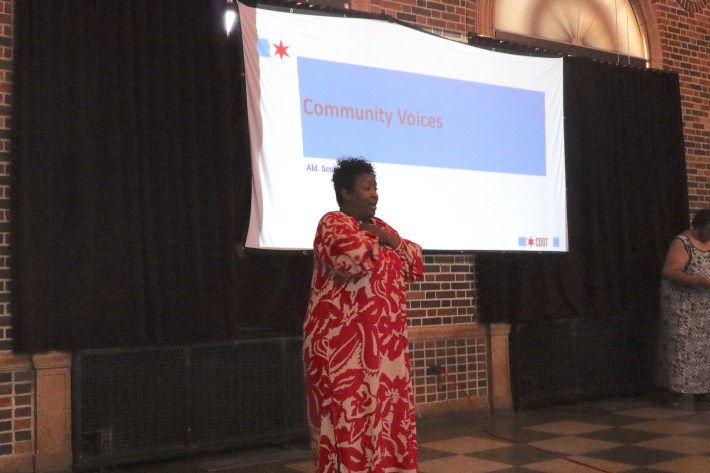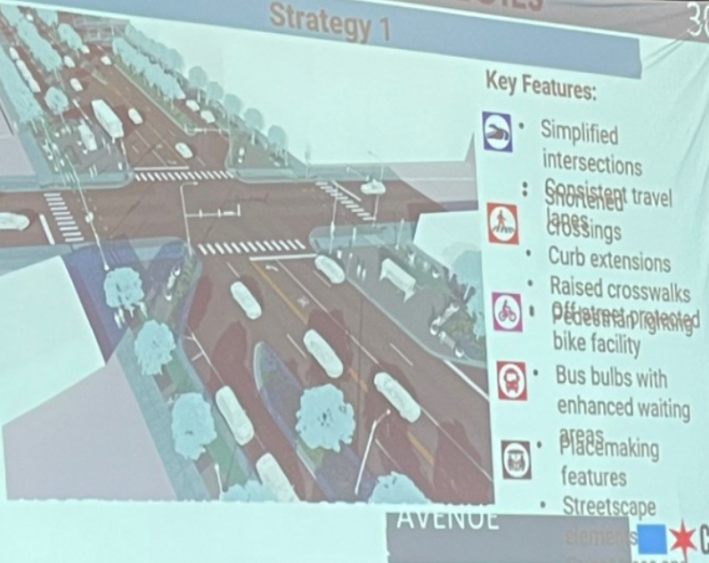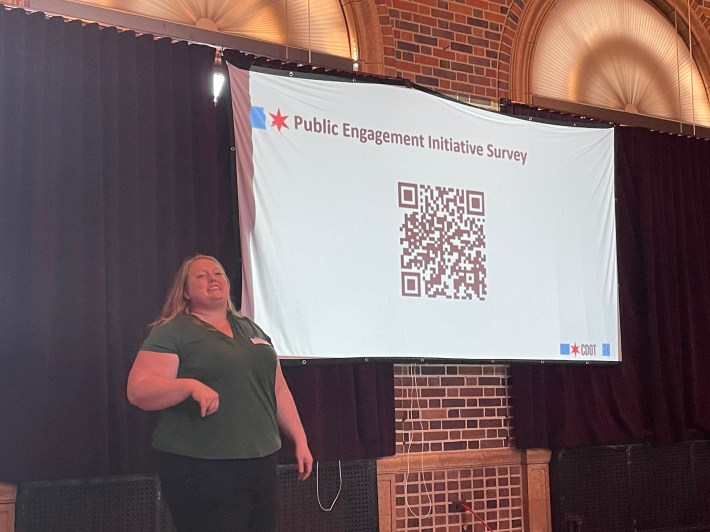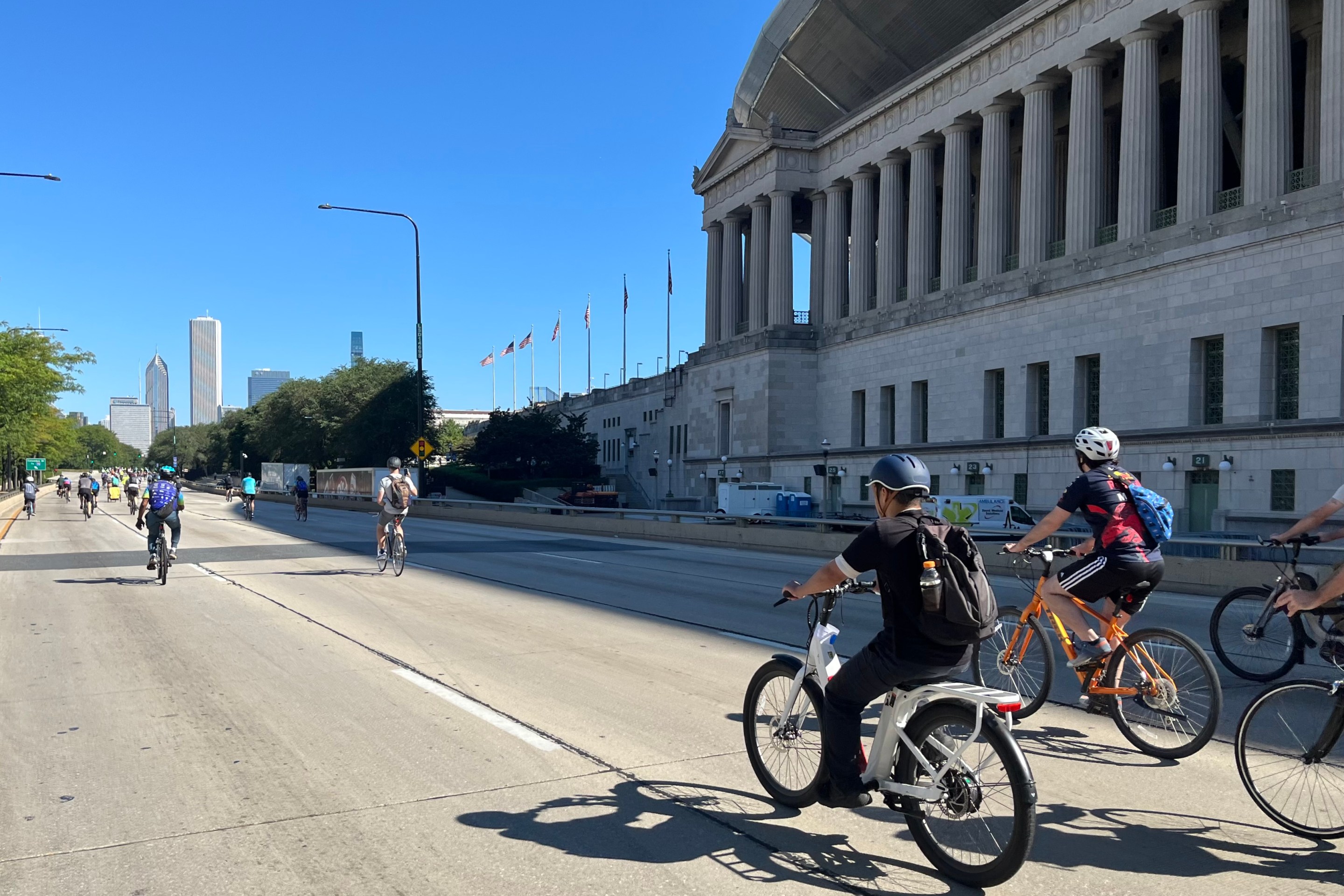
Last week the Chicago Department of Transportation hosted its quarterly Chicago Mobility Collaborative community input meeting, this time discussing topics ranging from transit-friendly street designs to electric scooters. The event took place at the Douglass Park Cultural and Community Center, 1401 S. Sacramento Dr. in the North Lawndale community.
Local alder Monique L. Scott (24th) welcomed attendees to the session. "These kind of meetings are meaningful because we want to hear what the community has to say. I'm an advocate of all things safety in our community, and really just creating these safe spaces."
Ald. Scott added that she bikes a roughly five-mile circuit around the neighborhood every morning. "I'm not as great as Alderman [Daniel] La Spata," she said, referring to the bike-friendly 1st Ward representative who recently convinced Mayor Brandon Johnson that cycling in a suit can be practical. "But it gives me at least five miles a day."

Chicago Department of Transportation Complete Streets Director David Smith provided updates on the department's traffic safety initiatives. He said that, following a spike in traffic crashes during the COVID-19 pandemic, in the past two years there has been a roughly 30 percent decrease in Chicago traffic fatalities.
Smith also talked about how the intersection of Chicago Avenue and Halstead Street is getting reconstructed either later this year or early next year, in conjunction with the new Bally's Casino development. "We had a public information meeting last week, where we presented a revised designed that incorporated a lot of really cool elements, including dedicated transit lanes on Chicago Avenue... also including some really nice bike improvements on Halstead."

After that, CDOT Project Manager Vanessa Irizarry gave a presentation about the Ogden Avenue Corridor Improvements Project. At the most recent workshop for the project, CDOT shared wo potential strategies for the corridor with community members.

Strategy 1 maintained car parking in the service drives, while Strategy 2 opened some of that right-of-way to pedestrians and relocated the parking to a lane adjacent to the primary travel lanes.

Illinois Department of Transportation Traffic Records Coordinator Sarah C. Moore spoke next. She also discussed the spike in traffic deaths during COVID, particularly in lower-income communities of color.
Moore said her bureau is working on a "triangle highway safety plan" for fiscal years 2024 through 2026 in Illinois communities that were particularly impacted by traffic violence. "Chicago had by far the highest rates, but we want to drill down to specific communities, and we found six or eight zip codes in particular. And North Lawndale happens to be within one of those zip codes of one of the highest rates of pedestrian crashes in Illinois. Peoria and Rockford are the other two locations that are the next highest."
IDOT wants community input on what could be done in impacted communities to reduce the crash, injury, and fatality rates. Moore showed a QR code that would direct attendees to a survey where they could give feedback.

As usual at the Chicago Mobility Collaborative meetings, participants broke into groups at one point to discuss various topics.
Table 1, Better Streets for Transit, discussed infrastructure projects and coalitions. So many people were there, the table was split into two smaller groups.
Table 2, Beyond the Bike Lane, gave people updates on Divvy bike-share and e-cooters.
Table 3, Committee on Pedestrian & Traffic Safety, talked about current efforts to reduce Chicago's default speed limit from 30 to 25 mph, and how to spread the word about this effort.
Table 4, Project Sidewalk, discussed the eponymous "online tool that allows users to label sidewalk infrastructure and identify accessibility barriers by virtually moving through city streets using Google Street View."
Table 5, Walkshop, was a walking tour to "discuss community-driven efforts to activate streets through programmed street [pedestrianization], bike rides, and other events."
Renée Badenoch participated in the Better Streets for Transit table, and expressed interested in Chicago getting robust bus rapid transit. "The city would really benefit from having dedicated bus lanes, especially on some of those high-traffic corridors." Badenoch was pleased to hear the city is installing more bike lanes, including lanes with physical protection from drivers.
This was third CMC meeting Badenoch participated in. While the event lasted about an hour and a half, Badenoch wished it was longer. "It feels a lot like we get talked to and didn't have as much time to share, from a community and commuter perspective."
That sentiment was echoed by attendee Jesse Bor, who's been coming to these meetings for almost a year, and thinks more time was needed in the breakout groups because the conversations always feel short.
There were a few final announcements at the meeting. Envision Unlimited will be host several bike rides for people with special needs between now and September – read Streetsblog's previous coverage of the organization here.
The Chicago Union Station Concourse Bike Meeting, takes place Thursday, June 27 from 6 to 7 p.m.
And the next CMC meeting will happen on Thursday, September 12 at a Far South Side location that will be announced in the future.
If you missed the Douglass Park meeting, CDOT will soon post a recording of the event on its Chicago Mobility Collective website.

Did you appreciate this post? Please consider making a tax-deductible donation to support Streetsblog Chicago.






